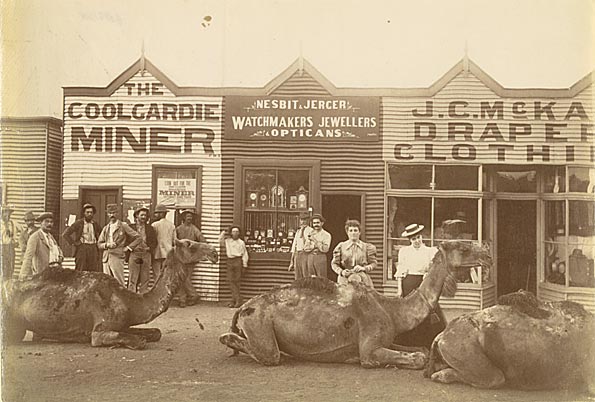 Camels in Coolgardie, 1890s
Camels in Coolgardie, 1890s
TLF ID R3175
This is a photograph, an albumen print measuring 13.6 cm x 20.1 cm, taken in the 1890s and showing three camels sitting outside commercial premises in Bayley Street, Coolgardie, Western Australia. The camels are not tethered or harnessed in any way. With the exception of a woman who appears to be patting a camel, all the people in the photograph are looking at the photographer, although they are not posing formally for a photograph. The buildings in the background advertise various businesses in large signs on the facades.
